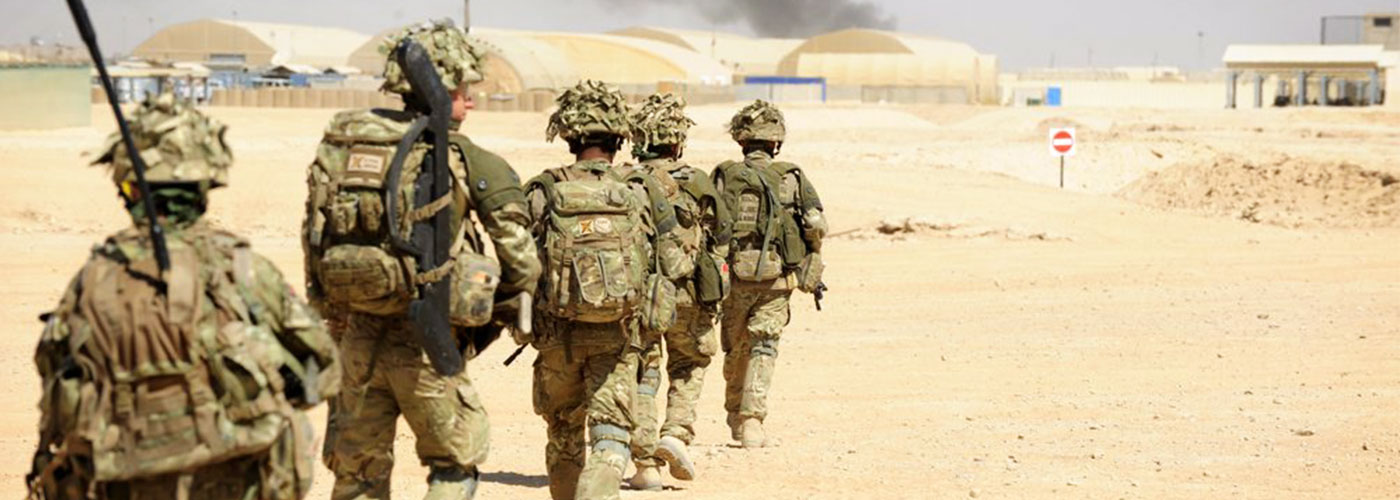The United States has on its Aegis-class cruisers a defense system that can track and destroy anti-ship missiles and aircrafts. Israel has developed a drone, the Harop, that can detect and automatically destroy radar emitters. South Korea has security-guard robots on its border with North Korea that can kill humans.
All of these can function autonomously — without any human intention.
Indeed, the early versions of the Terminator are already here. And there are no global conventions limiting their use. They deploy artificial intelligence to identify targets and make split-second decisions on whether to attack.
The technology is still imperfect, but it is becoming increasingly accurate — and lethal. Deep learning has revolutionized image classification, and recognition will soon allow these systems to exceed the capabilities of an average human soldier.
Indeed, the early versions of the Terminator are already here. And there are no global conventions limiting their use. Tweet This Quote
But are we ready for this? Do we want Robocops policing our cities? The consequences, after all, could be very much like we’ve seen in dystopian science fiction. The answer surely is no.
For now, the U.S. military says that it wants to keep a human in the loop on all life-or-death decisions. All of the drones currently deployed overseas fall into this category: They are remotely piloted by a human (or usually by multiple humans). But what happens when China, Russia, and rogue nations develop their autonomous robots and acquire with them an advantage over our troops? There will surely be a strong incentive for the military to adopt autonomous killing technologies.
The rationale then will be that if we can send a robot instead of a human into war, we are morally obliged to do so, because it will save lives — at least, our soldiers’ lives, and in the short term. And it is likely that robots will be better at applying the most straightforward laws of war than humans have proven to be. You wouldn’t have the My Lai massacre of the Vietnam War if robots could enforce basic rules, such as “don’t shoot women and children.”
And then there will be questions of chain of command. Who is accountable in the event that something goes wrong? If a weapons system has a design or manufacturing issue, the manufacturer can be held accountable. If a system was deployed when it should not have been deployed, all commanders going up the chain are responsible. Ascribing responsibility will still be a challenging task, as it is with conventional weapons, but the more important question is: Should the decision to take a human life be made by a machine?
The more important question is: Should the decision to take a human life be made by a machine? Tweet This Quote
Lethal autonomous weapons systems would violate human dignity. The decision to take a human life is a moral one, and a machine can only mimic moral decisions, not actually consider the implications of its actions. We can program it, or show it examples, to derive a formula to approximate these decisions, but that is different from making them for itself. This decision goes beyond enforcing the written laws of war, but even that requires using judgment and considering innumerable subtleties.
And the steady seepage of military technologies into civilian life will see these military systems being deployed in our cities.
Artificial systems have the benefit of not experiencing destructive emotions, such as rage. But they also lack critical positive emotions, such as sympathy and compassion. As Maj. Daniel Davis of the U.S. Army points out: “In virtually every war involving the U.S. the enemy discovered that although GIs could be as ruthless and vicious as any opponent, the same soldier could extend mercy when appropriate.” The point of war is to attain peace on our terms; the human connection is an important part of facilitating it.
Lethal autonomous weapons systems would violate human dignity. The decision to take a human life is a moral one. Tweet This Quote
The only way to avoid untenable situations is to create and enforce an international ban on lethal autonomous weapons systems. Unilateral disarmament is not viable. As soon as an enemy demonstrates this technology, we will quickly work to catch up: a robotic cold war.
The precedent for this sort of ban is well established. Barbed spears, chemical weapons and blinding lasers are all weapons that society has agreed should never be used. (Unfortunately, nuclear weapons are not specifically banned, though their use may violate other international laws limiting civilian casualties and long-lasting effects; the main factor curtailing their use is the fear of massive retaliation.)
There is hope for such a ban. Efforts are underway by the U.N. Convention on Certain Conventional Weapons (CCW), leading scientists and the Campaign to Stop Killer Robots to have the world’s governments consider a multilateral treaty that would remove the temptation to build a bigger, better swarm of autonomous killer robots and deploy them sooner than the next potential enemy can. But we are collectively responsible for considering these moral questions and deciding whether we want this technology to be used in war.
Robotics and artificial intelligence both offer great potential for helping society — from searching collapsed buildings for survivors, to sifting massive data for new treatments for cancer. It is up to us whether we harness their potential to build peace and enrich our lives or to ensure endless war and cheapen human life.
This post originally published in The Washington Post.



